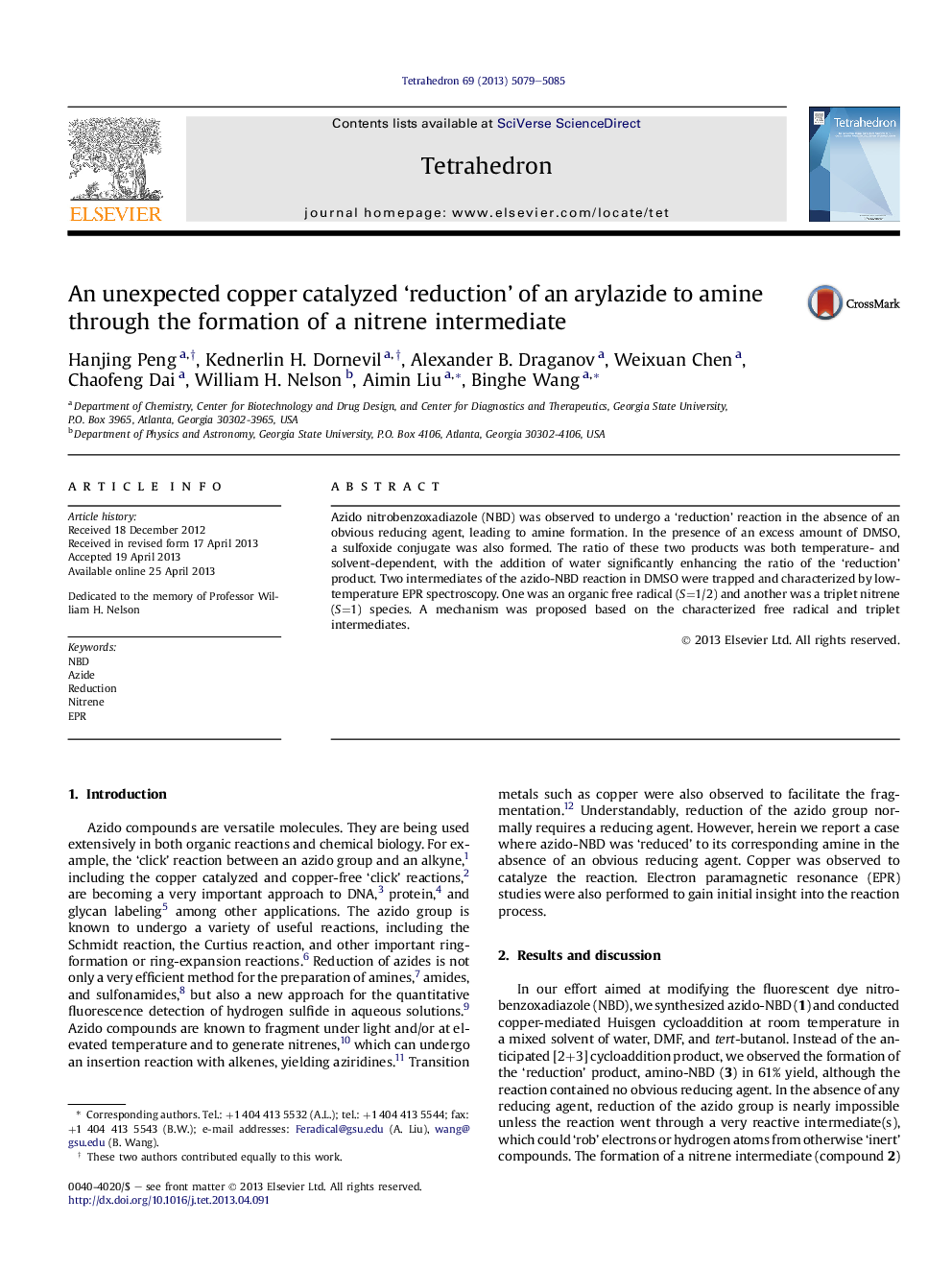| Article ID | Journal | Published Year | Pages | File Type |
|---|---|---|---|---|
| 5218239 | Tetrahedron | 2013 | 7 Pages |
Abstract
Azido nitrobenzoxadiazole (NBD) was observed to undergo a 'reduction' reaction in the absence of an obvious reducing agent, leading to amine formation. In the presence of an excess amount of DMSO, a sulfoxide conjugate was also formed. The ratio of these two products was both temperature- and solvent-dependent, with the addition of water significantly enhancing the ratio of the 'reduction' product. Two intermediates of the azido-NBD reaction in DMSO were trapped and characterized by low-temperature EPR spectroscopy. One was an organic free radical (S=1/2) and another was a triplet nitrene (S=1) species. A mechanism was proposed based on the characterized free radical and triplet intermediates.
Graphical abstractDownload full-size image
Related Topics
Physical Sciences and Engineering
Chemistry
Organic Chemistry
Authors
Hanjing Peng, Kednerlin H. Dornevil, Alexander B. Draganov, Weixuan Chen, Chaofeng Dai, William H. Nelson, Aimin Liu, Binghe Wang,
